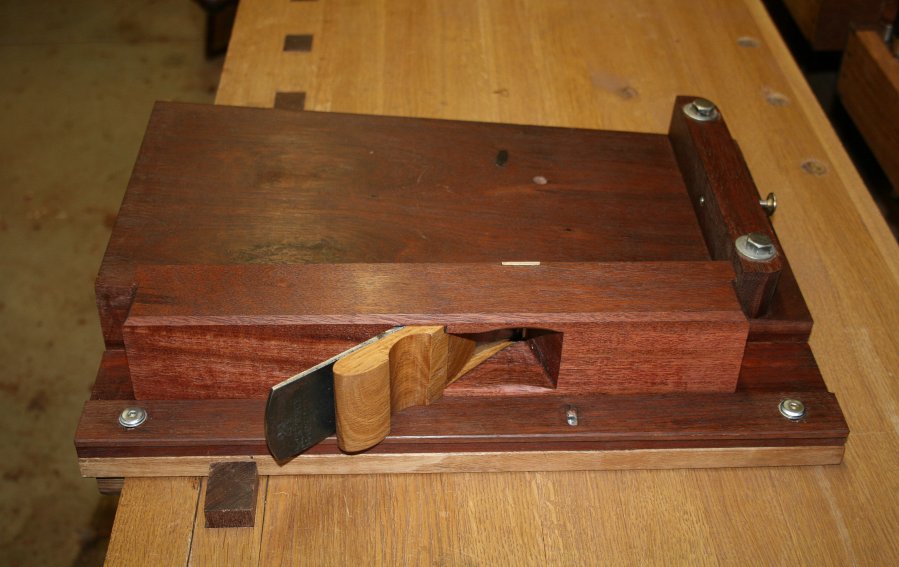If you have time you could make a laminated plane with a sqaure body and a skew iron. Turn or buy a round knob to thread Into the side to act as a pushing point between your thumb and forefinger. Use a 2 3/8 inch blade from a metal plane you have or better yet buy a wooden plane blade from LV for like 36$. Bed the iron no more than 40 bevel down and you'll have a true low angle plane while retaining a 30 degree bevel. You could make a track for this plane too.






 Reply With Quote
Reply With Quote



